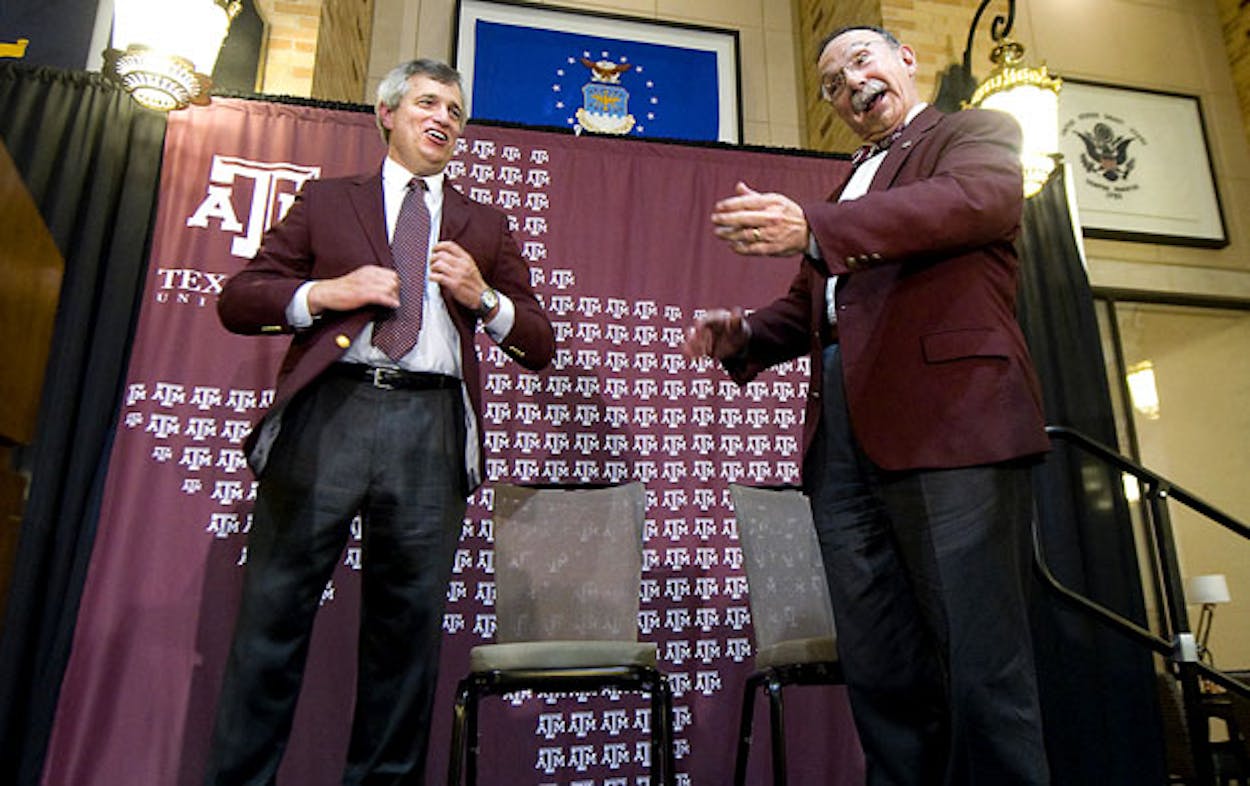If there was ever any doubt about how valuable the Texas A&M brand is to the Southeastern Conference, look no further than this past weekend’s hiring of Eric Hyman as the Aggies’ new athletic director. Hyman left an established SEC school, the University of South Carolina, where Steve Spurrier’s football team went 11-2 in 2011, for newbie A&M, which is coming off a 7-6 season.
Did he do it for the challenge, or did he do it because College Station offered the better job? Probably a little bit of both. Hyman upgraded many of USC’s facilities, and a similar task awaits him at Kyle Field. But Hyman also did it, it would seem, because he’d rather be in Texas. Before taking over the Gamecocks program in 2005, he was TCU’s AD.
“(Y)ou have to believe the pull of moving closer to his son and daughter, both of whom live in Fort Worth, weighed heavily in his decision to take the Texas A&M job,” wrote Ron Morris of the State.
TCU figured its best chance for success was to become the top team in the WAC and get as much media attention as possible. “We should be able to compete for championships in almost every sport from the get-go,” former Athletics Director Frank Windegger said at the time.
To achieve that, the university needed to make a stronger financial commitment. In 1997, it hired up-and-coming administrator Eric Hyman to replace Windegger. Hyman knew TCU needed to build and modernize, but mostly, it needed to start winning. He called his plan Operation Leap Frog, a blueprint for growth that the department continues to use.
In November 1998, the Board of Trustees approved an $8 million package to make TCU “a nationally prominent athletics program.” A slew of facilities were constructed as TCU worked to reverse perceptions. At the time, TCU football had suffered 30 losing seasons in 38 years….
“The truth is we lost a generation of fans because the product on the field was so bad,” Hyman said from his office at the University of South Carolina, where he has served as athletics director since 2004. “When we started carrying out our plan, we knew the team wouldn’t be coming back right away. But we were going to work to get them back.”
“Hyman strolls into a situation similar to those he encountered in Fort Worth and Columbia, S.C. – football mediocrity where football is king,” wrote Brent Zwerneman of the Houston Chronicle and San Antonio Express-News.
And the Horned Frogs-Aggies connection doesn’t stop there, as Robert Cessna of the Bryan-College Station Eagle wrote:
Ironically, there’s still a chance what Franchione accomplished will pay dividends for the Aggies. Part of Hyman’s legacy during his seven years at TCU was hiring Franchione who, after bolting for Alabama, was replaced by defensive coordinator Gary Patterson.
Hyman said TCU wouldn’t be where it is today if it hadn’t been for Franchione. He’s right. And Hyman wouldn’t be signing his name on a contract worth about $1 million a year unless Franchione had fallen flat on his face in Aggieland.







